Why is portion size important?
I’m not one for counting all your calories or focusing too hard on how much I’m eating of what – that way lies madness, and a poor relationship with food! But I do get asked, is portion size important?
Simply put, it’s important to be aware of portion sizes as too much or too little of any type of food can increase our risk of health problems. So we need some way to have an idea of what we’re eating over the day or week.
Portions are a way of measuring and comparing an amount of a food group. A slice of bread for example, is roughly equivalent to a medium potato, or 3tbsp cereal in its carbohydrate content.

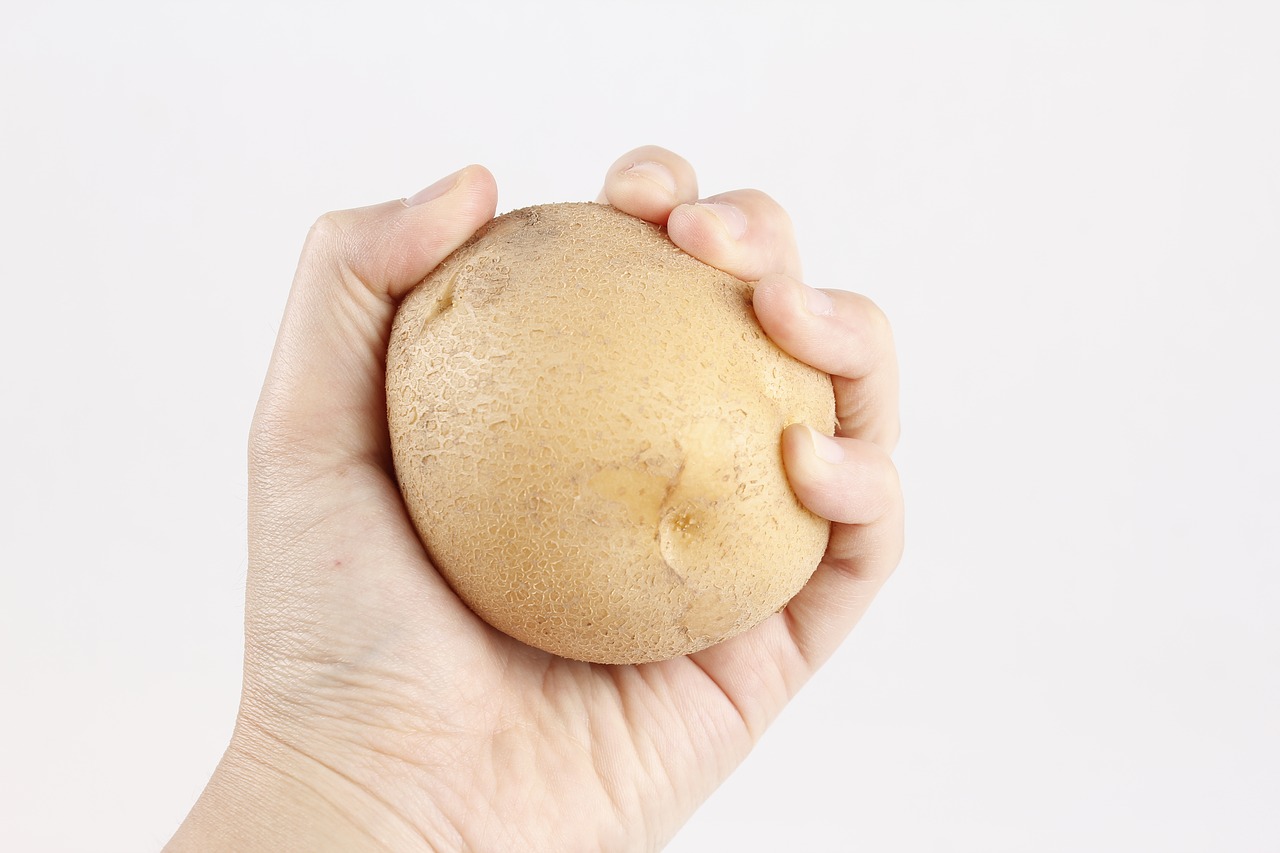
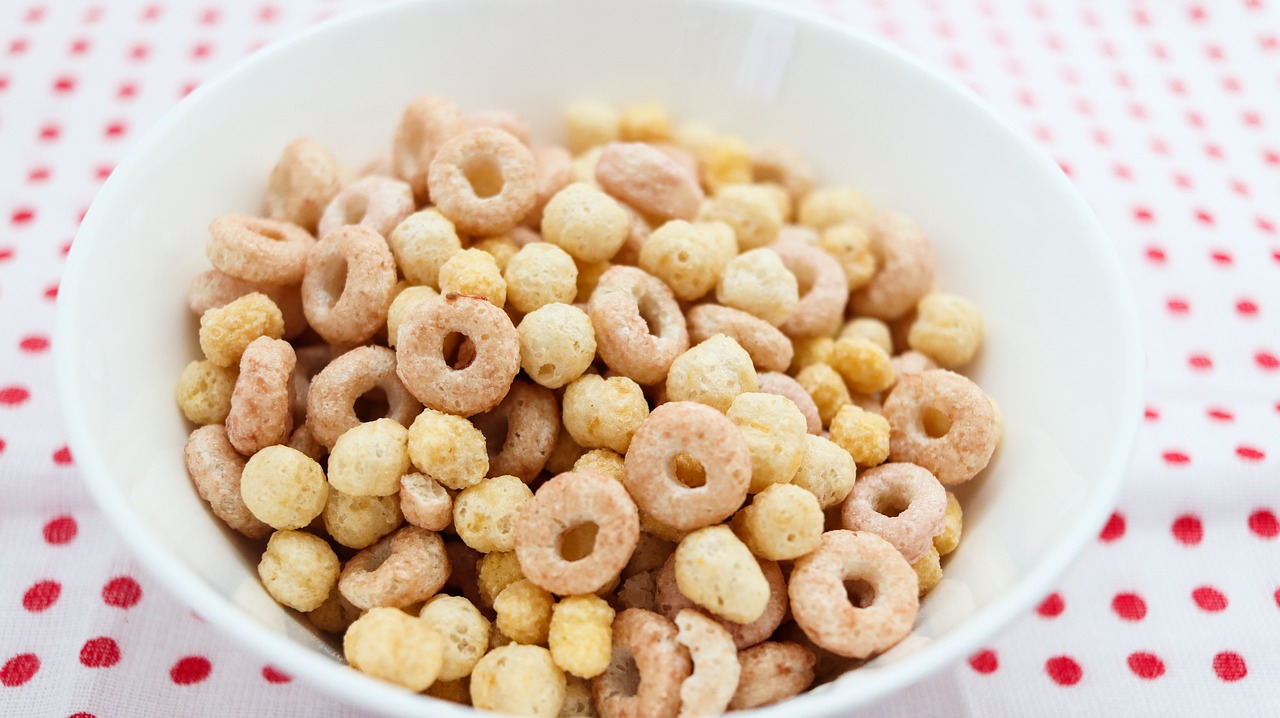
It isn’t necessarily the amount that you should have in one sitting, you may have two medium potatoes for instance, or be happy with 60g rather than 75g pasta, but it’s often close…
So it’s just a way of being able to track roughly how much of the each of the main food groups we’ve eaten so we can see if we’re balanced or not and adjust. It sounds more complicated than it is, and eradicates the need to focus on calories for most people. Definitely a plus!
How do we measure portions?There are a couple of options: portion sizes as an approximate weight and portion sizes determined using your hand…
Using weightThis needs learning, so it’s ok if you’re cooking at home and can have a reference guide open – like this one from nutrition.org.uk.
Beware that recipes may not always have the healthiest balance of portions. Feel free to amend your proteins, carbs and fats to fit what you need – don’t be scared to play around with recipes a little!
My main example of this is the Lean in 15 recipe books by Joe Wicks. I LOVE them for the flavour combinations he comes up with, and because they are usually quick and easy. But for me, the portion sizes are all off! So I switch it; add some carbs, reduce the protein and usually add more seasonal veg. Rarely does it turn into a disaster because of my fiddling!
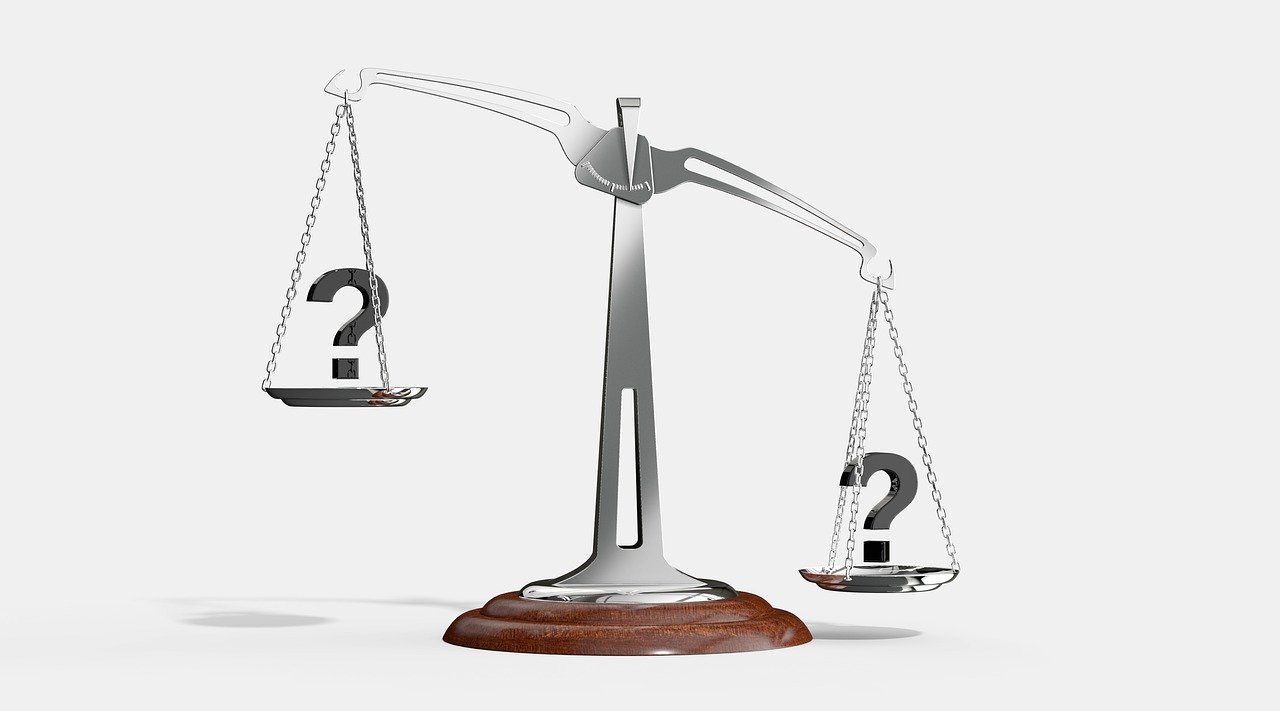
Here are some examples:
- A portion of pasta is 75g
- Cooked pasta or rice 180g
- A baked potato should be 220g
- Around 40g of breakfast cereal
- A piece of cooked meat 120g
- Cheese 30g
- 20g of peanut butter
- 30g soft cheese
- 125ml milk
These need to be learned, which is going to take a little time…
Using our handsThe most accurate way to judge portions is to weigh your food, but that’s not always practical! Another way of looking at portions is using hand measurements – which has the added benefit of varying by person, and so a woman would generally eat less food than a man if a portion is a ‘fist sized amount’, which fits with their generally lower need.
Instead we can estimate with the following:
- Portion of pasta is 2 handfuls.
- Spaghetti bunch should be about £1 coin thick
- Cooked pasta or rice should fit in 2 hands cupped together
- A baked potato should be the size of your fist
- Around 3 handfuls of breakfast cereal
- A piece of cooked meat around half the size of your hand
- Cheese around the size of a matchbox (or two thumbs)
- 1tbsp of peanut butter
- 3tbsp soft cheese
- About half a small glass milk
On a high level, this is:
- Carbs – 1 fist per portion
- Protein – half a hand / your palm
- Fats – 2 thumbs
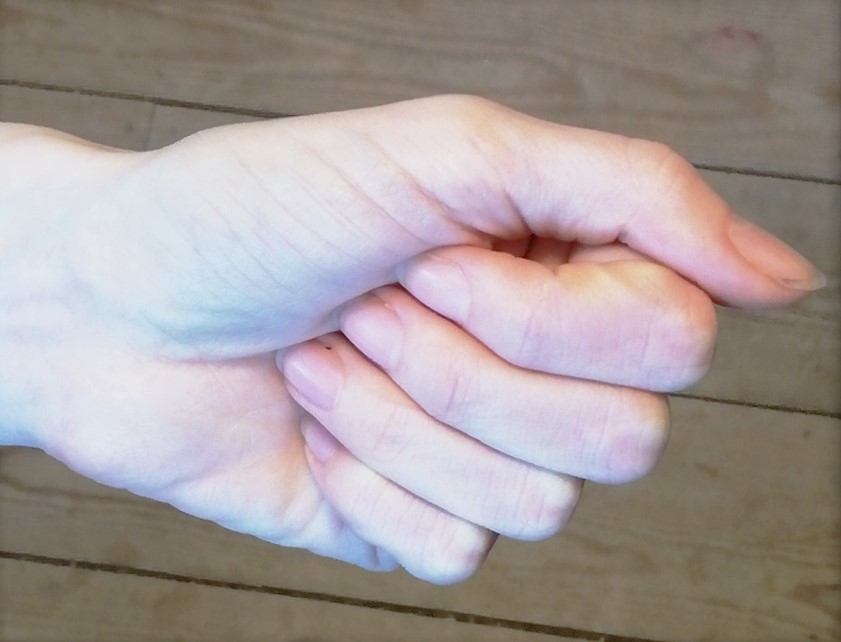

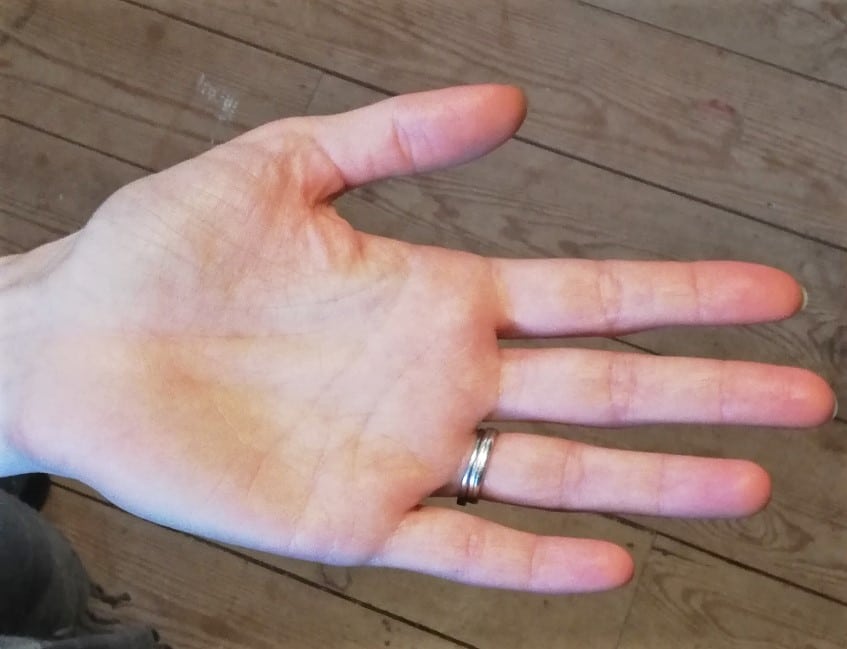
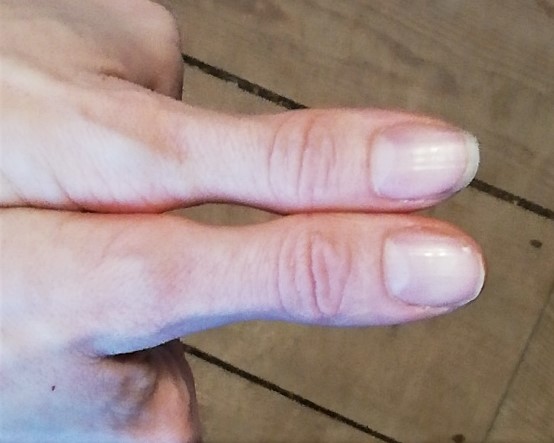
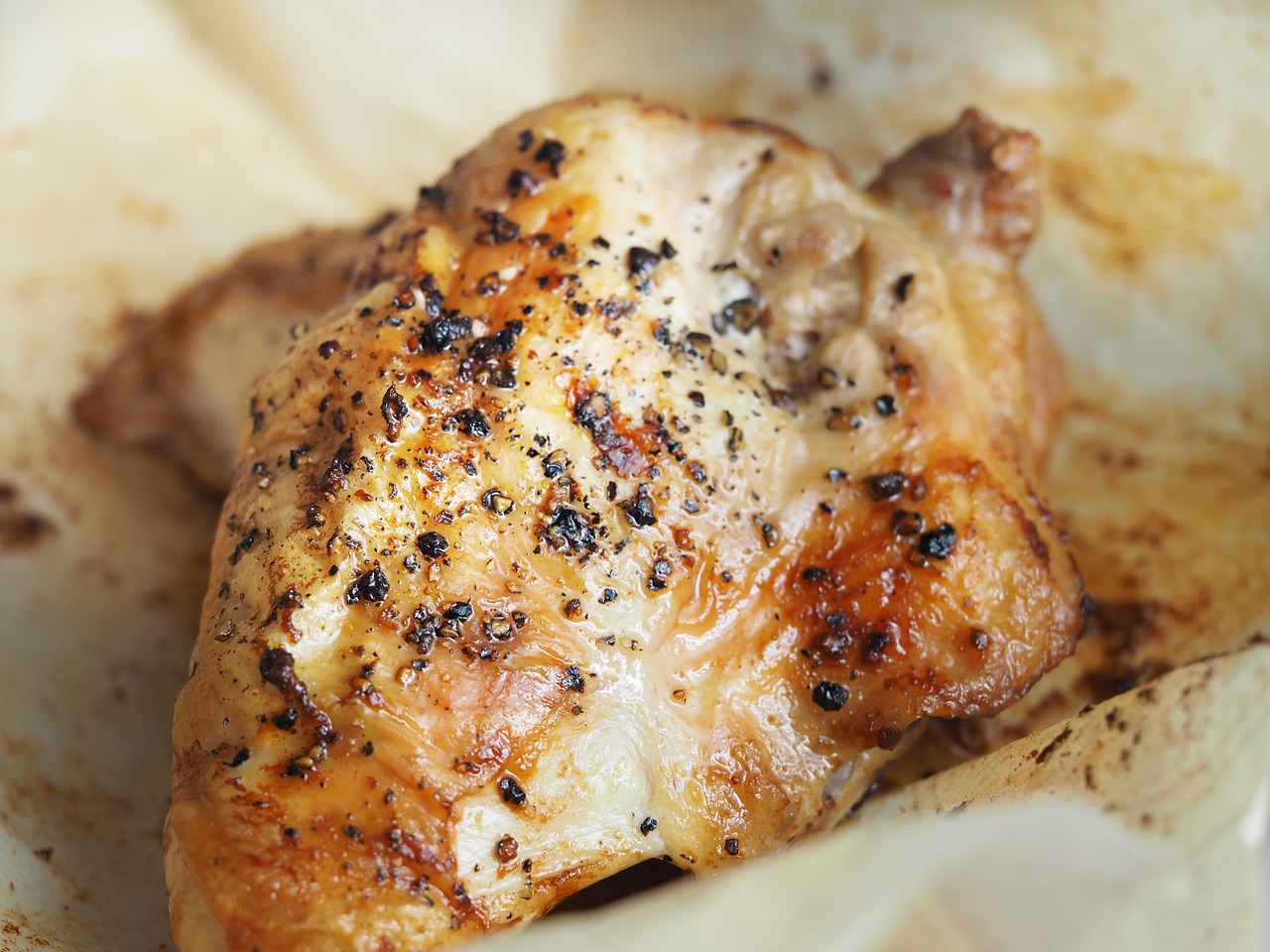
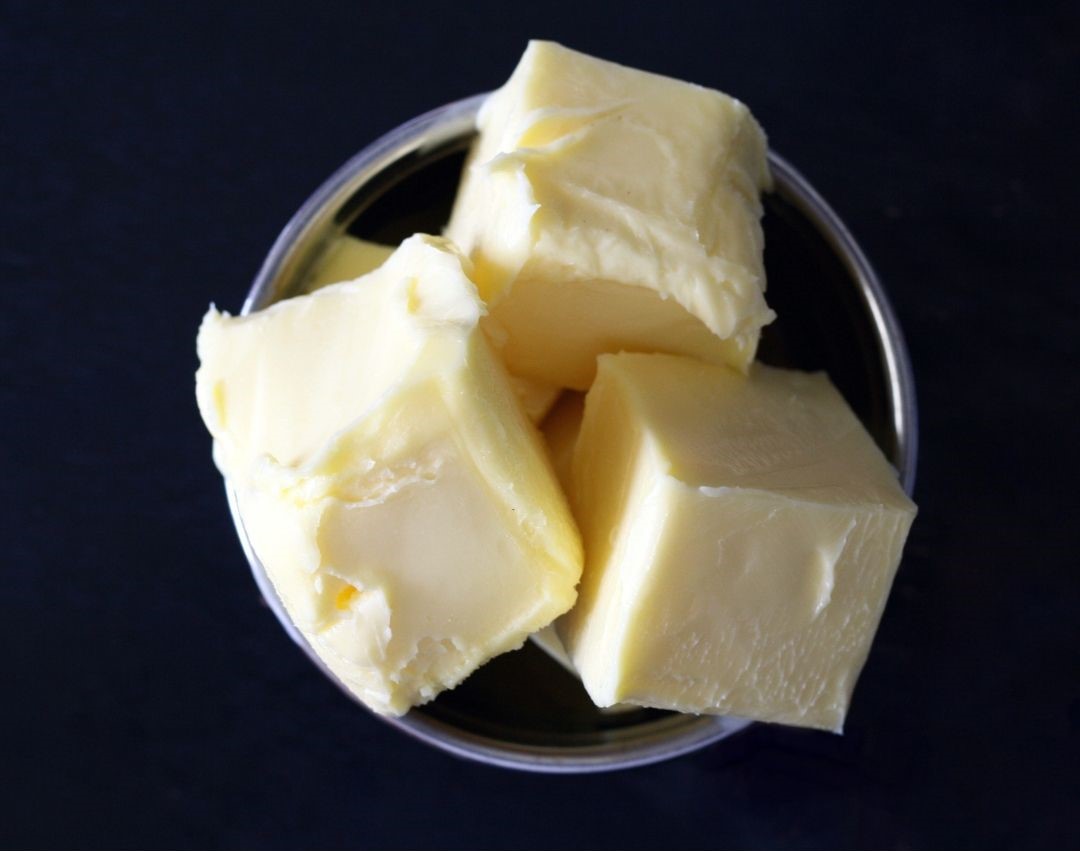
One that I talk about a lot is fruit and veg portions – as I like to try and get close to 10 a day!
Unfortunately, just having a couple of slices of cucumber in your sandwich and a slice of tomato isn’t 2 portions.
The general guide is that it’s 80g. To help you estimate, for fruit that’s roughly an apple or orange size. And for cooked veg, that’s about 3-4 heaped tbsp, or as much as you can hold in your hand.
You can mix up your veg, so 160g of salad with a mix of lettuce, cucumber, and tomato would count as 2 portions.
For dried fruit portions are 30g, and only count once per day.
Watch your juices too – a portion is 150ml and you should only be counting one a day of these (due to the high sugar content).
Beans and pulses also count to your 5 a day – but only once, so add 3 heaped spoons of beans or pulses to one meal a day.
Remember you can always go bigger with vegetables – this is what you should be filling up on.
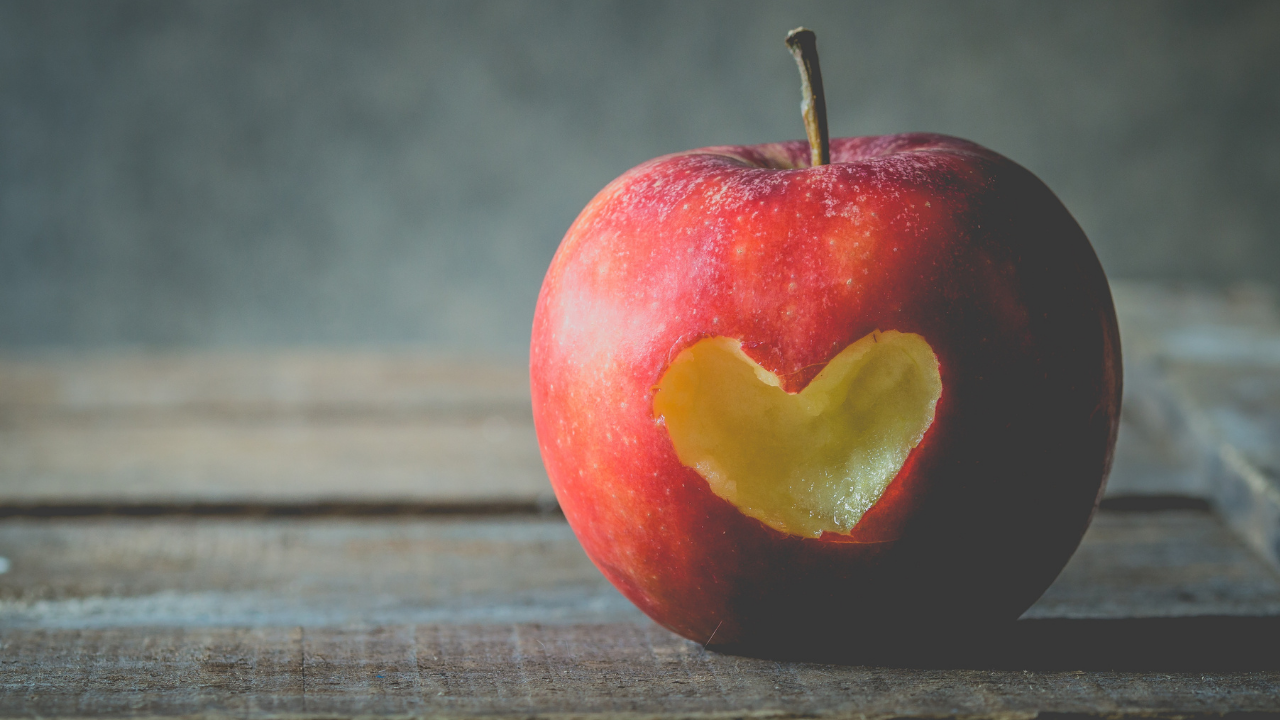
Another way of visually working out your portions to check your meal is balanced, is to use the Eatwell Plate. It shows visually how much of your plate approximately should be filled with each food group. Again, not great for mixed foods, but if everything’s largely separate it’ll work.
How many portions do you need a day?We all need slightly different volumes of food a day depending on our metabolism and exercise levels, and I’d be happy to talk to you more about what yours are over the phone (and work it out!). Book a session in to see what your requirements are…
There is a generally recommended amount though, and this is where the ‘hand’ portions are great as they vary by person.
The UK government suggest we get:
- AT LEAST 5 portions of fruit and veg every day.
- 3-4 portions of starchy carbohydrates (ideally wholegrain for fibre)
- 2-3 portions of proteins (beans, fish x 2 per week – 1 oily, pulses, eggs, meat etc)
- 2-3 portions of dairy and other alternatives (milk, cheese, yoghurts, alternatives). Ideally lower-fat options (without added sugar).
- Then consume small amounts of unsaturated oils and spreads (about a thumb or less).
- This should give around 2000 calories per day.
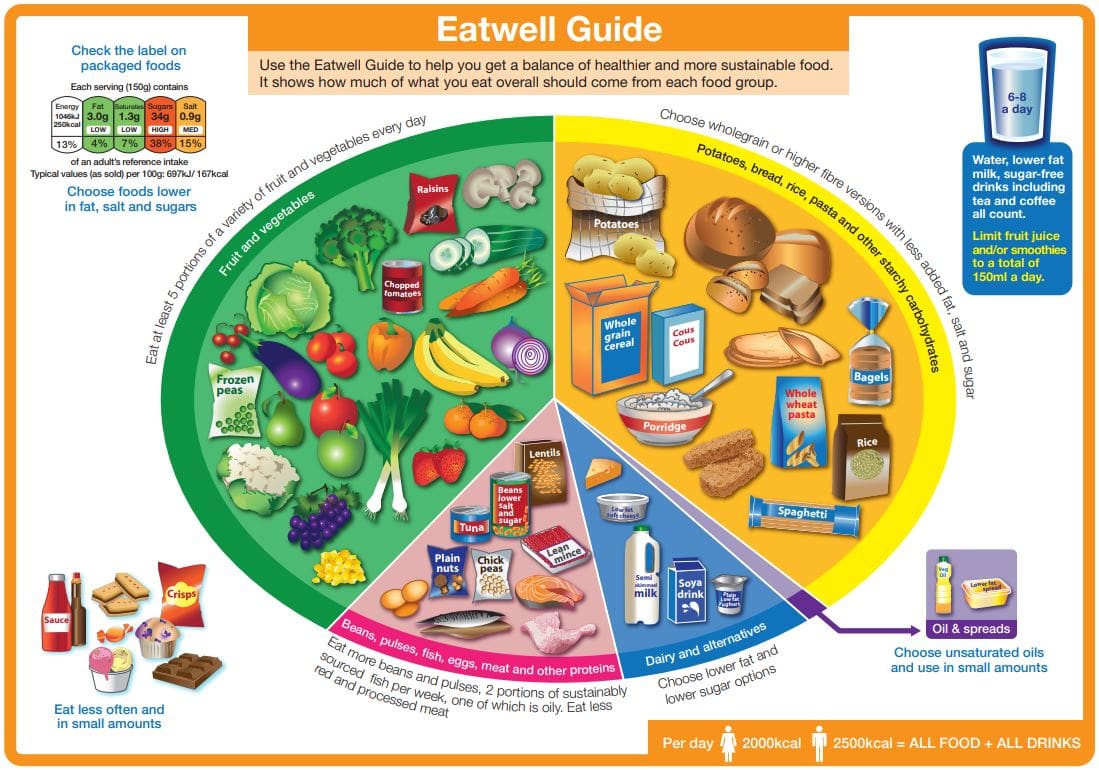
Personally, I have a couple of issues with this…
Firstly, I don’t think potatoes should be grouped into carbs. They have nothing like the carb content of pasta and rice. Potatoes are down at around 20% carb content, whereas rice, pasta and cereals are around 70-80%!! I also disagree that they are not vegetables! They still have nutrients like a vegetable!! The main reason for
I also disagree with dairy being included as a separate section. It doesn’t make sense as it isn’t one of the macro food groups like fat, protein and carbs. One of the reasons they did this is because it’s such a large part of our mainstream diets. For me, it should be fewer portions than this. The vitamins can be gained from elsewhere, and the dairy industry is a large contributor to our planet’s issues. Dairy foods can also vary significantly in their macro content from 70% fat in hard cheeses, to 1% fat in some milks. In my opinion, this takes away the control that keeping a rough track of your macros gives you!
And where are the nuts? They have lots of fats and protein. Fats are an important part of our diets, and are just limited to a small mention about having some in moderation. Just like our carb portions should be high quality (brown rice, not biscuits for example), our fat portions are necessary but should be high quality; nuts and seeds rather than deep-fried oils.
If I were to redesign it I would have it like this:
Come check out the rest of the article at Why is portion size important? - EAT THINK EXPLORE for how to put this into practice, making it work in restaurants and some free infographics so you can be reminded of all this on the go!
I help working mothers with health conditions overcome barriers to improving the way they eat so they can stop wasting their time and energy on draining health conditions and instead focus on the…
Would you like to promote an article ?
Post articles and opinions on Birmingham Professionals
to attract new clients and referrals. Feature in newsletters.
Join for free today and upload your articles for new contacts to read and enquire further.



